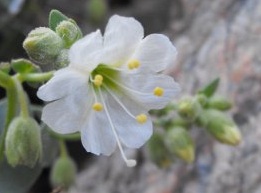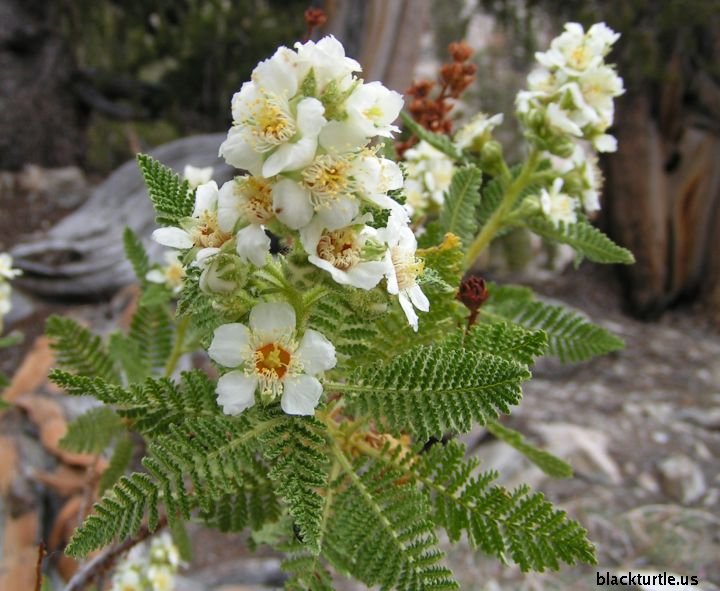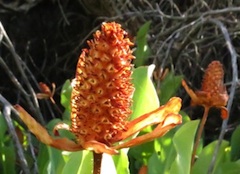|
|

|
Inyo Milkvetch
January/February
There are many members of the Astragalus genus which grow in the Death
Valley area. In fact, Mary DeDecker in her book cataloging plants found in
the Northern Mojave Desert lists twenty-five species of Astagalus, plus
several varieties. Included in my online collection are seven species of
milkvetch which I have found growing in the Death Valley area. The easiest
way to locate the pages for all seven is to simply click on the List by
scientific name link at the top of the Death Valley Area Plants page.
(Click here for more info!)
|

|
Wishbone Bush
March/April
Wishbone Bush is one of the many plants that have been reclassified in
recent years thanks to the analysis of plant genomes. Formerly, it was
classified as Mirabilis bigelovii, but now it is known as Mirabilis laevis.
Although many plants have been reclassified as members of new families or
put into different genera, Wishbone Bush has only become included as a
member of a new species. Sometimes the adjustment made as a result of
genetic analysis is large and sometimes it is small, and sometimes genetic
analysis only confirms that the current classification is appropriate.
(Click here for more info!)
|

|
Sandpaper Plant
May/June
Sandpaper Plant (Petalonyx thurberi) is one of the few plants that can be
counted on to produce flowers during the summer at elevations below 4000
feet in the Death Valley area. In fact, it blooms from May to September and
sometimes even into November. The small, white flowers form in clusters and
although they may not be spectacular, they are quite attractive. A slight
problem with this plant is that its dried leaves can sometimes adhere to
clothing and can be quite difficult to detach from said clothing. For this
reason, Velcro Plant is a nickname sometimes used for this plant!
(Click here for more info!)
|

|
Twistflower
July/August
There are several members of the Mustard Family which produce interesting
flowers. The Heart-Leaf Twistflower (Streptanthus cordatus) produces flowers
consisting of a sepal which is green, yellow, or maroon, with petals which
are brownish-purple or maroon. Blooming from May to July, the Twistflower is
likely to be found in the Inyo, Panamint, Grapevine, or Last Chance
mountains in the Death Valley area. Otherwise it grows throughout the Great
Basin region at elevations between 5800 and 10000 feet.
(Click here for more info!)
|

|
Fern Bush
September/October
Also known as desert sweet and tansy bush, fern bush is primarily
encountered at higher elevations. It may be found in mountainous areas in
and around Death Valley at elevations above 6800 feet. The fernlike foliage
is obviously the reason this plant is called fern bush and when there are no
flowers present it appears to be an unlikely member of the Rose Family, but
once flowers are present it's easy to see the family resemblance.
(Click here for more info!)
|

|
Yerba Mansa
November/December
As a member of the Lizard's Tail Family (Saururaceae), Yerba Mansa is every
bit as unusual as you might expect. The large flower cone is actually a
cluster of small flowers and what appear to be petals are actually modified
leaves (called bracts) which just happen to be white. Helping colonies of
this plant to spread are rhizomes from which new plants sprout as long as
there is sufficient water. Yerba mansa is not encountered often in the Death
Valley area since it can only flourish near springs or other sources of
water, but there are a few spots where large colonies can be found.
(Click here for more info!)
|
|
| |
|

blackturtle.us
PLANT
BLOG
BLOG INDEX
ASSOCIATED SITES:
Trona News
Rusky Ed
Any Place Education








|

















